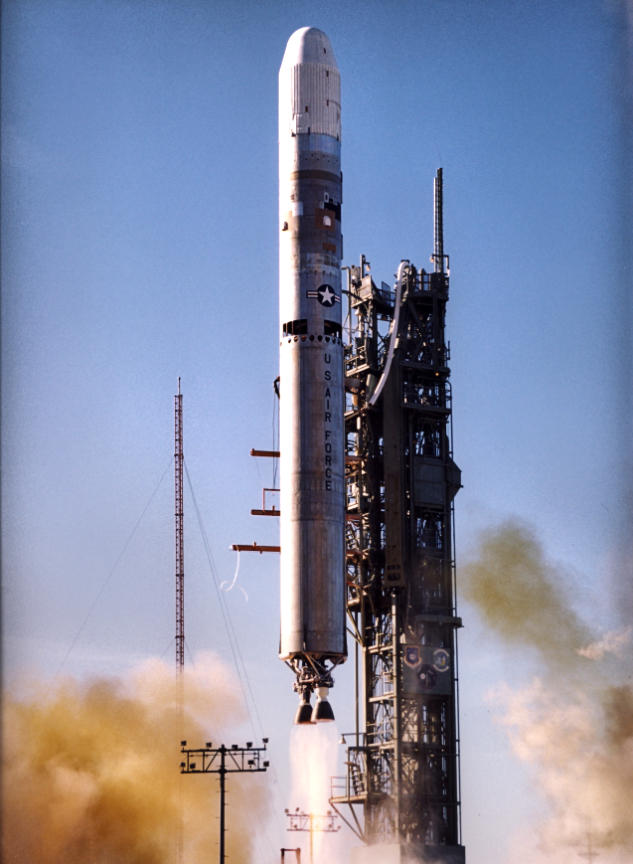
DMSP-14 lifts off aboard a Titan 23G rocket from Vandenberg Air Force Base, California, April 4, 1997. Decommissioned in February of 2020, the satellite provided global weather data to the U.S. and its allies for more than 22 years and completed 118, 052 orbits around the Earth.
Photo is courtesy of the USAF.

On February 11, after more than 22 years of providing vital global weather data to the U.S. and its allies, Defense Meteorological Satellite Program (DMSP) Flight 14 was decommissioned after completing 118, 052 orbits of the Earth.
End of Life (EOL) procedures were accomplished by operators at the National Oceanic and Atmospheric Administration (NOAA) Satellite Operations Facility (NSOF) in Suitland, Maryland, under the direction of United States Space Force’s 50th Space Wing. Space and Missiles Systems Center technical experts worked in concert with the rest of the team to ensure the EOL procedures were effectively and efficiently executed.
The remaining four operational DMSP satellites continue to provide a resilient capability for collecting and disseminating global environmental data in support of operations around the world. The DMSP satellites continue to be sustained past their original three to five year design life. At the time of its decommissioning, F-14 was in operations for more than 22 years. According to the program office, the longevity of DMSP is a testament to the work of each and every person that has been a part of the program, and to the multi-agency partnerships that have been fostered since the beginning of DMSP.

Artistic rendition of a DMSP satellite on-orbit.
Image is courtesy of the USAF.

SMC remains at the forefront of providing the next generation of modernized space based environmental monitoring capabilities, ensuring the critical weather mission will continue in the future. The Weather System Follow-on – Microwave (WSF-M) program will be holding its critical design review the week of March 31. WSF-M satellites will provide the next generation passive microwave sensing capability that provides ocean surface wind speed and direction measurements, supports tropical cyclone intensity prediction, and will also host an energetic charged particle sensor for measurement of the local space environment. The first WSF-M satellite is expected to be operational in Fiscal Year 2024.
The U.S Space Force’s Space and Missile Systems Center, located at Los Angeles Air Force Base in El Segundo, California, is the Center of Excellence for acquiring and developing military space systems. Its portfolio includes the Global Positioning System, military satellite communications, defense meteorological satellites, space launch, range systems, satellite control networks, space-based infrared systems and space situational awareness capabilities.

